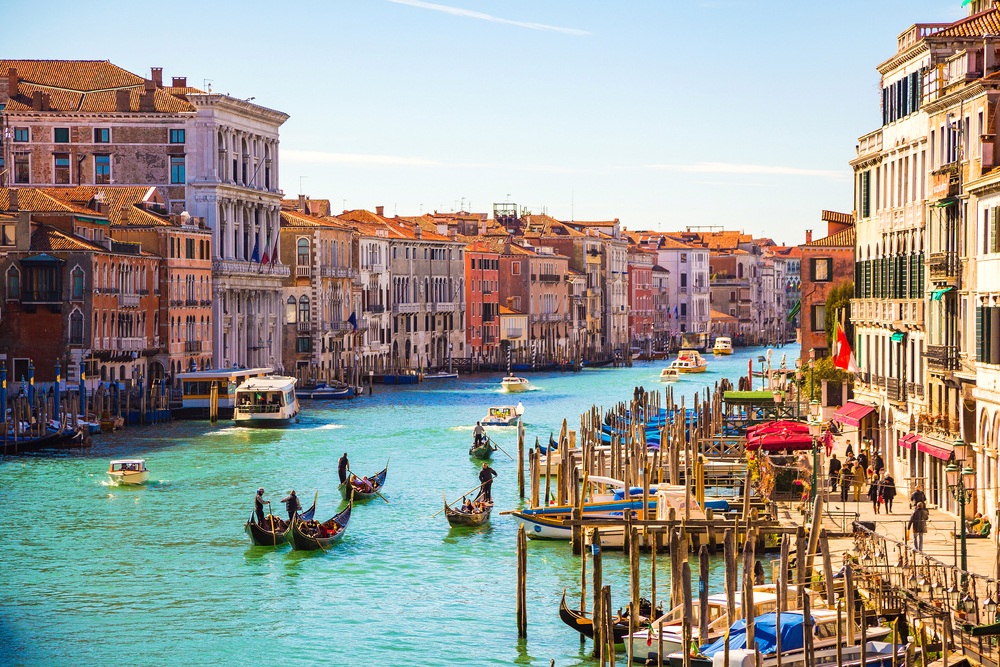
Venice - the miracle at the lagoon
When the city is so full of interesting places and historical monuments - it is difficult to decide where to start the inspection. Perhaps it's best to just get lost for a few hours, wandering around its charming little streets and aisles, strolling along the canals, and searching for secret alleys. At every step you will find something interesting. At the same time, you will always easily find a way back to St. Mark's Square and the Main Canal. Most of Venice's best attractions are centered around these two landmarks. In addition, you can always go with an excursion to the nearby islands: Murano, Burano and Torcello.
1. St. Mark's Square
Let's start with one of the most recognizable sights of Venice - the San Marco Spot. St. Mark's Square is probably the most famous place in the city. Since the medieval period, piazza has always been regarded as the center of Venice and has been the location of all the important offices of the Venetian state and archbishop since the 19th century. There are also many Venetian festivals. This is the place where the most outstanding attractions of Venice are concentrated. The vast expanse of the largest square of Venice is strikingly elegant in its architecture. But not only architectural grace is so glorious in San Marco Square. This is a real living room in Venice - the place where all tourists gather, walk, drink coffee, take pictures, meet friends and guides. In the galleries on three sides of the square are concentrated fashion shops and even more trendy cafes. And on its open side is the majestic Basilica of St. Mark, from the bell tower which you can best consider the whole area.
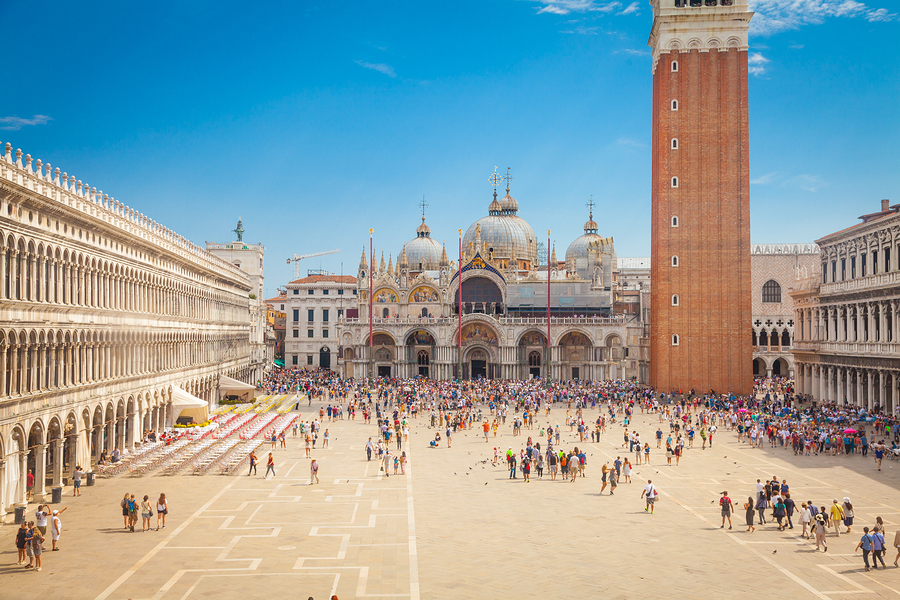
2. Gallery of the Academy
The Gallery of the Academy is the most famous art museum in Venice. Here is one of the largest collections in the world, which includes works by Venetian artists drawing up to the 18th century. The collection is arranged chronologically, but there are also themed shows. The Academy was founded in 1784 by the Grand Duke Pietro Leopoldo. The Academy Museum is located on the Grand Canal of Venice. It contains the richest collection of Venetian art objects of the 15th and 18th centuries. Most of the collection was collected from monasteries and churches, as well as from palaces of noble families, and is now presented to the public in the former Monastery of Santa Maria Della Carita. Some galleries represent the Venetian Gothic art, including the famous gilded ceilings of the 15th century. The works are arranged chronologically, so you can not only trace the development of styles, but also compare the works of contemporaries.
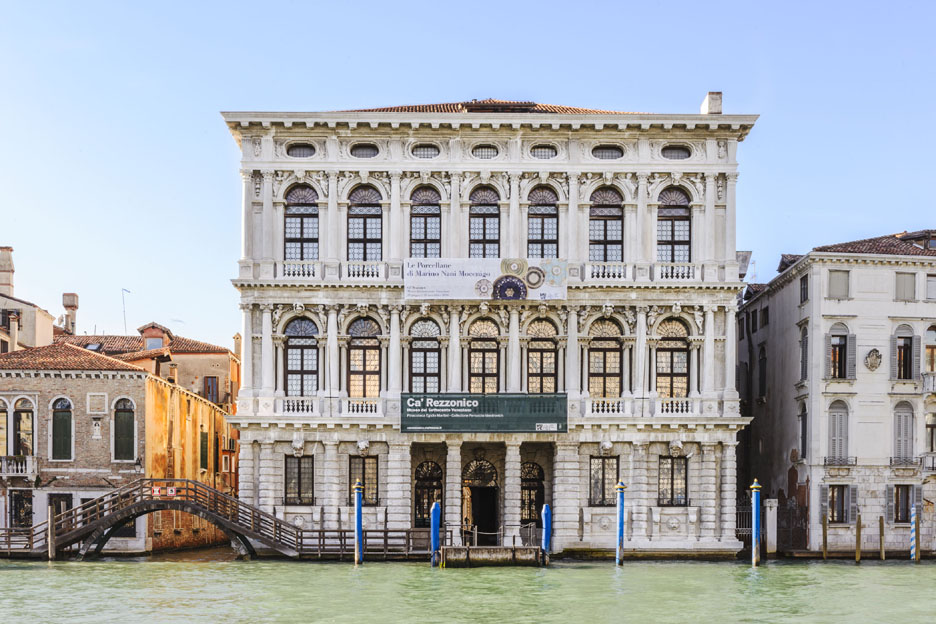
3. The Museum of Correr in Venice
This building was built between 1806-1814 during the Napoleonic era, when Venice was part of the Kingdom of Italy (1806-1814), and the stepson of Napoleon, Eugene de Boharna, was the viceroy of the king. Venetian painter Giuseppe Borsato worked on interior decoration, reproducing very cautious interpretation of the Empire style. The Museum of Correr takes its name from Teodoro Correr (1750-1830), an art collector who was a member of the old family of the Venetian aristocracy.

4. The Rialto Bridge
In the list of recognizable sights of Venice, the Rialto Bridge occupied one of the leading places. Ponte di Rialto is regarded as one of the most visited corners of the city on the water. This is the oldest bridge across the Grand Canal, the main transport artery of the city. During the rapid development of Venice there were no bridges between the two sides of the canal, which was a big problem. A few of these bridges and now, Rialto is among the four of them. Once the only bridge across the Grand Canal, Rialto was built in 1588, about 150 years after the collapse of the previous wooden bridge. Today it is a favorite point of observation for tourists photographed against the background of the canal and hundreds of gondolas plying over it. The Church of San Bartolomeo near the bridge belonged to German merchants who lived and worked on the German Commodity Exchange. In it there is an excellent altarpiece of Martyr San Bartolomeo. The Rialto Bridge is one of the most recognizable not only in Venice, but throughout Italy.
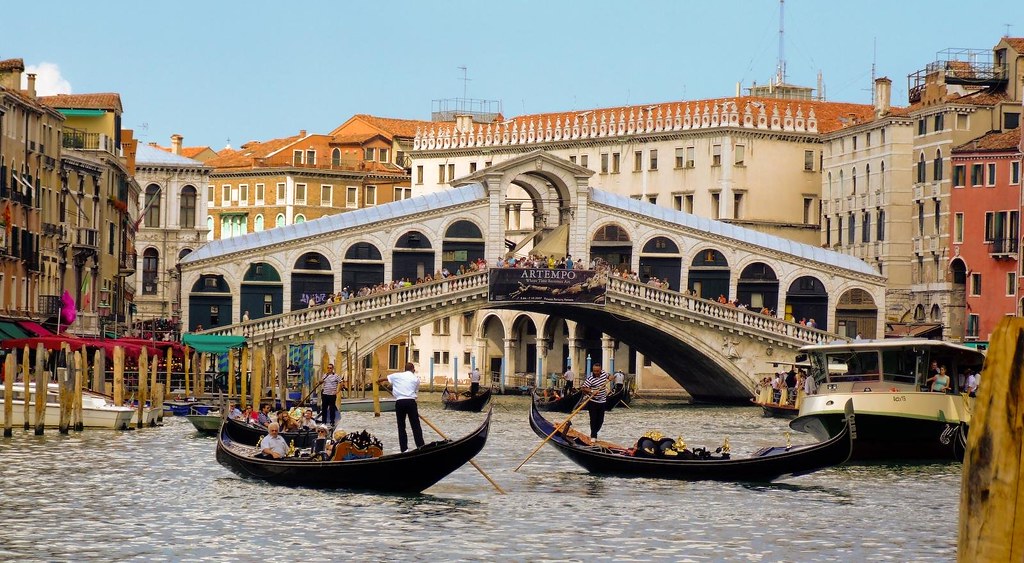
5. Ca 'd'Oro, or the palace of Santa Sofia
Ca 'd'Oro (Palazzo Santa Sofia) is one of the oldest and most beautiful palaces on the Grand Canal in Venice. It is known as the Golden House because of the gold and chrome in the exterior decoration that once adorned its walls. The Palazzo was built between 1428 and 1430 for the Contarini family, from which eight Venetian Doges occurred between 1043 and 1676 years. The delicate filigree work of Bartolomeo Bona is reminiscent of marble lace. It is very difficult to believe that all this beauty is carved from stone. Together with Porta Della Map in Palazzo Ducale, also created by Bartolomeo Bon, the Ca d'Oro is considered the most perfect example of the Venetian Gothic style. You can also admire the interior of the palace, since now there is an art museum dedicated to the life of rich Venetians in the 15th and 16th centuries. Guardian of the palace Baron Giorgio Franchetti donated to the museum his collection of works of art in 1922, with the works of Titian, Mantegna, Van Dyke, Tullio Lombardo and Bernini.
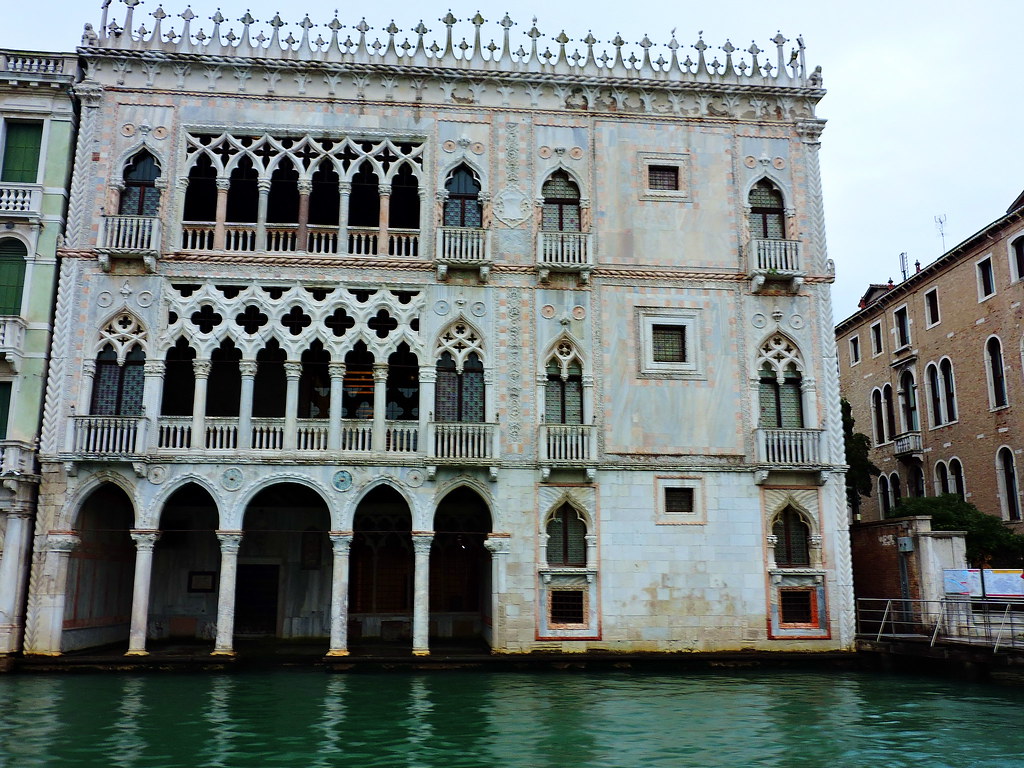
6. Cathedral of Santa Maria della Salute
The very famous religious landmarks of Venice, Santa Maria della Salute has a very interesting history. In the first half of the 17th century, a terrible plague broke out in northern Italy. The Doge of Venice decided on preventive measures to stop the infection. But all efforts were in vain, and the disease spread throughout the city. In a very short period of time, despite the restrictions imposed by the authorities, a significant part of the population was decimated. The Doge and most of his family were killed. The failure of medicine forced the government and people to turn to religion for salvation. A procession was organized in which all 10,000 survivors participated. They constantly walked around the San Marco Square for three days and nights, while reading prayers. It was decided that if the city escaped complete devastation, they would build a temple of such size and beauty that the world had not yet seen. The disease receded, and the residents decided to fulfill their promise - so appeared the Cathedral of Santa Maria della Salute.
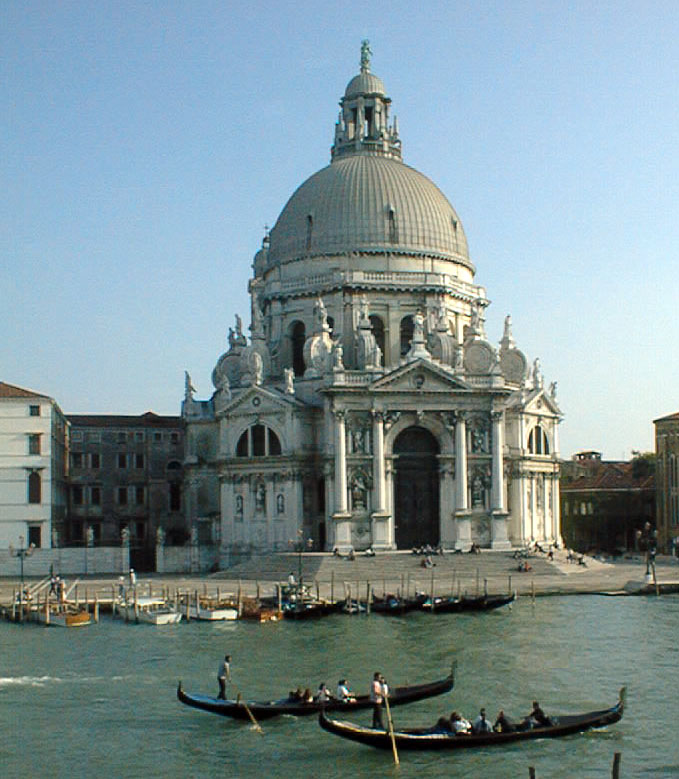
7. Teatro la Fenice
The theater of La Fenice from the very beginning was planned as the official theater of the Venetian aristocracy. Its construction was entrusted to the architect Gianantonino Silva and he was completed with exemplary speed in April 1792.
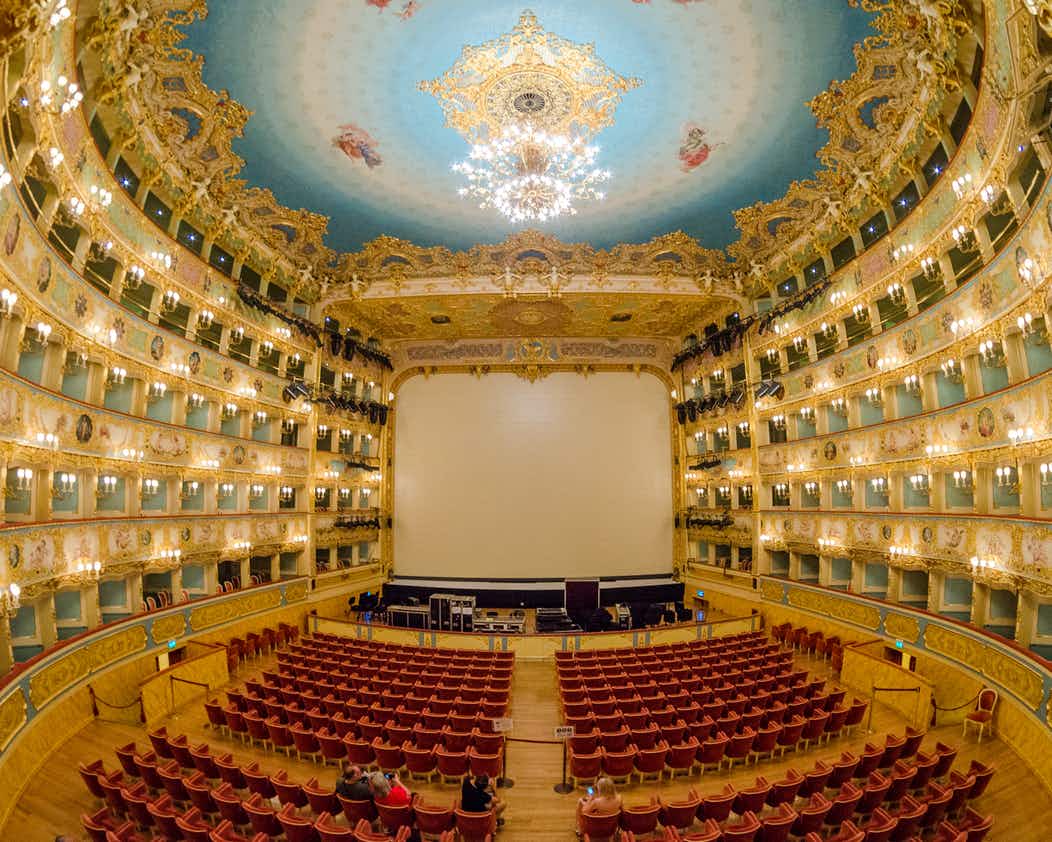
8. Palazzo Contarini del Bovolo
Contarini del Bovolo is a small palace in Venice. It is hidden in a small alley, known as the Calle della Vida, and belongs to the Contarini family. The original structure was designed by Giovanni Candi in 1499. The main attraction of this palace is an elegant spiral staircase with many arches. The family hired a second architect, Giorgio Spavento, to add this ladder to the original structure.

9. The Venetian Arsenal
The Venetian Arsenal (Arsenale di Venezia) is one of the most important places in Venice. This shipyard and naval depot played a leading role in the prosperous Venetian Empire. According to the myth, since the 8th century Venice had shipyards that were scattered throughout the city. But in the early 12th century these shipyards were found unsafe, and in 1104 the construction of the centralized structure of the Arsenal began. The Old Arsenal was built between 1100 and 1300, and a new complex between 1300 and 1400 years, while the New Arsenal was erected between 1473 and 1573. Arsenal is the shipyard of the Venetian Republic, the largest and busiest in the world until the end of the 17th century. Since its foundation in 1104, it has been constantly expanding, and at the time of its heyday there were 16,000 workers. Arsenal was carefully guarded to keep secret the secret methods of logistics and shipbuilding. An impressive entrance to the shipyard is a triumphal arch of the Renaissance style with statues of lions from Greece. This is one of the main maritime attractions of Venice. Adjacent to the shipyard, the Naval History Museum displays impressive trophies of numerous naval wars of the republic, along with fascinating collections of paintings. These charming images are interesting with their description of marine life and elegant style.
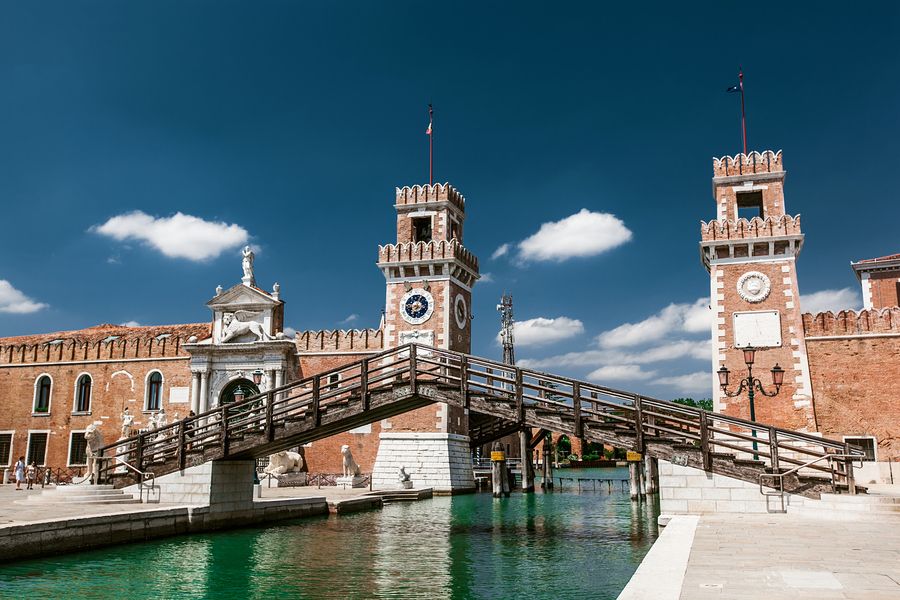
10. Fondaco dei Turchi
We finish the review of ten popular attractions of Venice by the Fondaco dei Turchi Palace. This is one of the oldest buildings in the city. At the beginning of the thirteenth century, Giacomo Palmieri, the wealthy nobleman Pesaro sought refuge in Venice. In 1225 he built this palace for his personal use. In 1381 the Republic of Venice assumed control and used the palace as the court of the Duke of Ferrara, Nicholas II.

11. The basilica of St. Mark
The most famous church in Venice and one of the most recognizable in the world - the Basilica of St. Mark. It is decorated with Byzantine masterpieces brought here as trophies after the fall of Constantinople. Gold-covered mosaic images over the doorways of the facade only hint at mosaic craftsmanship inside, where the walls and domes are covered with 4.240 square meters of gold mosaics. The distinctly Byzantine tone of the interior is mixed with the treasures of other periods, including the later mosaics of Titian and Tintoretto. With these names you will meet all over the city. The magnificent golden altarpiece of Pala d'Oro is one of the finest in Europe. It was created at the beginning of the 12th century and several centuries later, almost 2,000 precious stones were adorned. If you can take your eyes off this magnificence, pay attention to the mosaic domes, the many ornate altars and the marble floor, as well as the golden tombs in the Treasury.
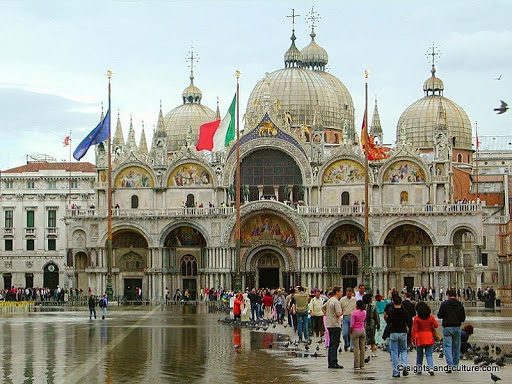
12. Palazzo Ducale and Bridge of Sighs
All tourists arriving in Venice pass along the shore under the facade of this extraordinary palace, impressed by its size and elegance of architecture. This impression is further enhanced when you find yourself inside the palace, passing through the massive Porta della Mapa with its majestic Gothic. Even the jaded travelers of the 21st century are delighted with the grandeur of the palace and its decoration. Here you can see the work of all the Venetian great people, including Tintoretto and his Paradise - the biggest picture in the world. During a private tour through the Bridge of Sighs you will reach the dark chambers of Piombi - the prison from which Casanova made his famous escape.
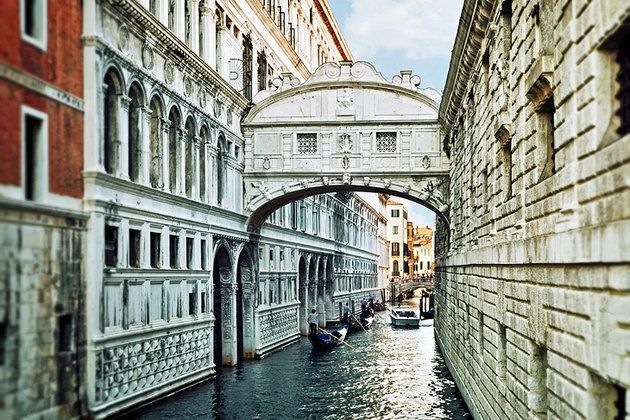
13. Grand Canal
The Grand Canal passes through Venice in the form of a giant letter S. It is the main transport artery of the city, connecting the Piazza San Marco, Rialto Bridge and the railway station, where trains come from the mainland. Only four bridges cross a canal 3.8 kilometers long, and numerous gondolas traghetty carry numerous tourists. The Grand Canal was the preferred residence for all the influential inhabitants of Venice. The palaces of all leading families were built with a view of the canal - their spectacular Venetian Gothic and early Renaissance facades facing the water. These palaces are very well preserved to our days, and during the excursion along the canal you will be able to perfectly view all the sights of Venice.
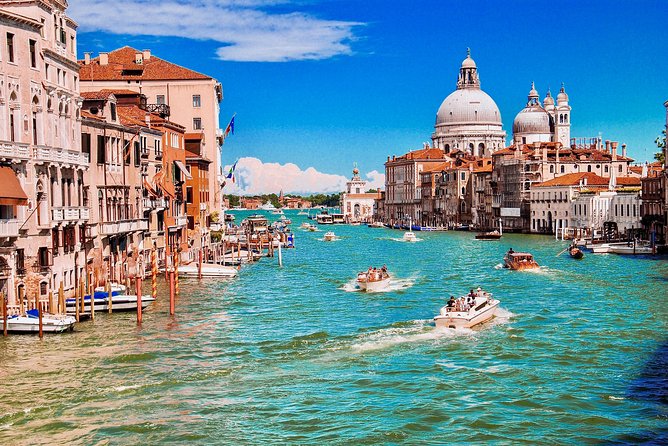
14. Scuola of San Rocco
Scuola San Rocco is not so often included in the list of popular attractions in Venice, but it definitely deserves attention. This impressive white marble building was created between 1515 and 1560 to house the San Rocco Charitable Society. Shortly after its completion, the great Venice painter of the 16th century Tintoretto won a competition for decorating the interiors of the building. He decorated the walls and ceilings of Scuola San Rocco with a series of paintings that were recognized as the most outstanding masterpieces by the artist. The earliest works are in the Hall of Albergo and date back to 1564. The most outstanding of these is the Crucifixion on the Cross. In the Upper Hall are depicted scenes of the New Testament, painted in the period between 1575 and 1581 years. Lighting here is not ideal, but you can still appreciate Tintoretto's innovations in the use of light and colors. More works of Tintoretto are in the altar of the adjacent church of San Rocco.

15. The Island of Murano
Acquaintance with the sights of Venice would not have been completed without a trip on board the vaporetto across the lagoon in Murano - the home of the legendary glassblowers in Venice. They were sent here in the 13th century to reduce the risk of fire in the densely populated center of Venice due to the glass blowing furnaces. Moving to Murano also had to contribute to the preservation of the secrets of blowing glass in the Venetian monopoly. The Decree of 1454 read: "If the glassblower leaves with his skill in another country to the detriment of the republic, he will have to go back, his closest relatives should be thrown into prison to force him to return, if he refuses to obey, he will be overtaken in any country and punished. " It was much easier to track glassblowers if they were limited to an island. Today, on both sides of the channel there are demonstration rooms and glass blower studios. Here you can find absolutely everything - from cheap imported knickknacks to graceful works of art. In the Palazzo Giustiniana of the 17th century is the Glass Museum with one of the largest and most valuable sets of Venetian glass from the time of the Romans to the 20th century. If you are thinking about how to spend time in Venice - without any doubt, include the island of Murano in your list.

16. The Palazzo Rezzonico
Just as the Ca'd'Oro allows you to plunge into the life of the late Middle Ages, the Palazzo Rezzonico gives a vivid representation of life in the Baroque periods and Rococo of the 18th century. Designed by the leading connoisseur of the Baroque architecture of Venice, Baldassare Longen, the palace was completed by Giorgio Massari almost 100 years later, in 1750. Of particular note is its interior decoration with silk wallpaper, exquisite details and Flemish tapestries. A set of costumes emphasizes the importance of silk production in Venice, which competed with Lyon in France. The museum demonstrates the importance of luxury goods for the Venetian economy of the 18th century, when it was decorated with gold and silver brocade, distributed throughout Europe and the New World.
17. Santa Maria Gloriosa dei Frari
This Gothic church was founded by the Franciscans around 1340 and finished in the middle of the 15th century. Its impressive bell tower of the 14th century is the second tallest in Venice. Despite the fact that the interior has the characteristic simplicity of the Franciscan churches, Santa Maria Gloriosa dei Frari contains many artistic treasures. In the right transept is an important wooden statue of St. John the Baptist, created by the Florentine sculptor Donatello in 1451. Monks Choir is an outstanding example of wood carving by Marco Cozzi with relief of saints and Venetian scenes. The mausoleum of Titian in the southern aisle was a gift from Ferdinand I of Austria when he was King of Lombardy Veneto. The pyramidal mausoleum in the northern passage was made by the students of sculptor Antonio Canova, as well as the large monument to Titian opposite. This is one of the underestimated attractions of Venice, which many undeservedly deprive of attention.
18. Torcello Island
The history of Venice began on the island of Torcello already in the seventh century, and by the 12th century it was a thriving commercial city. You can get an idea of the importance of Torcello visiting the Cathedral of Santa Maria Assunta, built in 639. He is considered the best preserved example of Venetian-Byzantine architecture. The cathedral was rebuilt in 834 and 1008, and the portico and two lateral apses were added in the ninth century. Inside, there are many outstanding mosaics. The oldest of them are in the chapel to the right of the main throne. The western wall is covered with Byzantine mosaics with the image of the Last Judgment, created in the late 12th - early 13th century. The cathedral is adjoined by a small church of Santa Fosca, a pure Byzantine plan with a characteristic portico. Your admission ticket includes an entrance to a small interesting historical museum with artifacts from antiquity to the 16th century.
19. Church of Santa Maria dei Miracoli
Not surprisingly, among the sights of Venice, most churches and cathedrals. After the vast splendor of the Cathedral of St. Mark, the church of Santa Maria dei Miracoli gives a real breath of freshness. This is a true masterpiece of Early Renaissance architecture, created by Pietro Lombardo. Unlike other churches in Venice, whose facades are decorated with frescoes and statues, Lombardo used painstakingly painted marble with thin samples of circles, octagons and crosses on the facade. This method continues inside, reinforcing the effect of the golden domed ceiling above the gray and coral marble walls. The nave is delimited from the altar by an elegant early-Renaissance balustrade decorated with figures. It's no wonder that this is the favorite place for the wedding ceremonies of the Venetians, since the interior of the church is one of the most beautiful in the city.
20. Lido Island
A long 12-kilometer strip of sand separates the Venetian lagoon from the Adriatic Sea. It is considered the first real seaside resort in Europe since the heyday until the end of the 20th century. This place was very popular among European nobility and celebrities. Today anyone can enjoy sandy beaches and luxury hotels. Public beaches are located at the northern end of Lido Island, near the Church of San Nicolo. You can stroll along the Lido on foot, or rent a bicycle near the pier. The island is filled with Art Nouveau villas and hotels, which you can explore while walking along the numerous lanes. In August and September, the International Film Festival is held in the Palazzo del Cinéma.


















